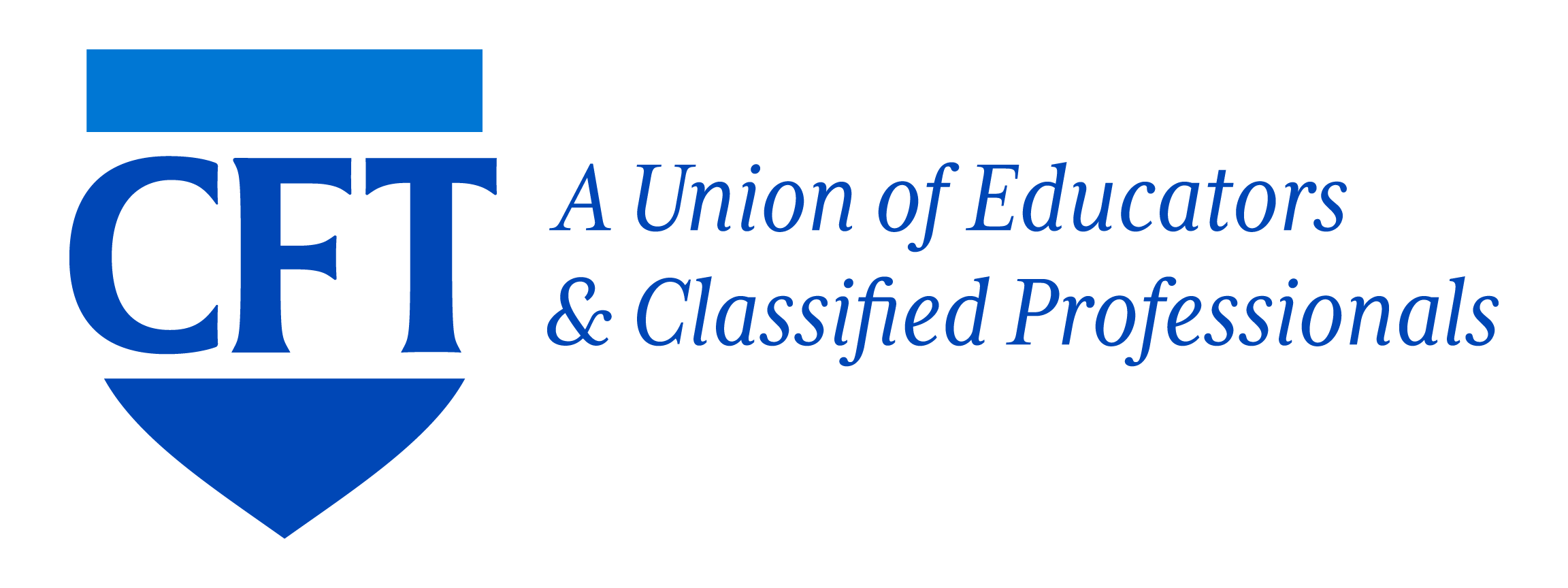By Joshua Pechthalt, CFT President
We learned in the final days of September that the U.S. Supreme Court will take up another union fair share case. With the court’s ruling coming early next year, it feels like we are on a ship with an iceberg rapidly approaching. Fortunately, as we prepare for an unfavorable decision in the Janus v. AFSCME case, we had already prepared for the similar Friedrichs v. California Teachers Association case.
So, while a great deal still needs to be done, we have had months to undergo a deep assessment of our statewide union and develop an organizing plan, including determining budget and organizing priorities.
Make no mistake though, this will be difficult. The end of union “fair share,” or “agency fee,” revenues will require making cuts to achieve a balanced budget. We will have to struggle through the next period and come out on the other side able to represent our members and able to advocate for public education.
The number one priority for our union is engaging our members. Each local has to have a systematic plan, one that is quantifiable, for talking to members. My own experience underscores the value of this approach.
I taught for over 20 years at a large urban high school in Los Angeles. At our high point, we had a faculty of 175. When I began teaching in 1984, our chapter chair (building representative) who had held that position for many years, would have coffee weekly with the principal yet only one meeting a year, at most, with the teachers.
Through a change in leadership at our school site, we transitioned from one meeting a year to twice-weekly meetings and finally once-a-week meetings. Attendance at the meetings usually numbered between 15 and 25 people, but if there was an urgent issue the room would be packed.
Our school went from a sleepy worksite to become one of the most active in United Teachers Los Angeles. While it certainly was important to have members who were themselves activists, once we created an infrastructure for activism it allowed for more members to get active.
A school site administration that had been anti-union changed its tune. Lunch-time union meetings were announced on the PA, whether the contract permitted it or not. On one occasion, administrators imposed a change to our break period, which teachers opposed. We held a meeting and, by the end of the day, the administration had reversed its position. There were defeats along the way, but there were enough victories that teachers saw the value of maintaining a strong school site chapter.
One important change was the development of a school network that allowed us to talk with colleagues. Our core activists committed to talking to their fellow teachers on a specific floor in a specific building. This became an important avenue for rank-and-file members taking increasing responsibility and it grew member-to-member interaction.
Whatever the size of your local union, now is the time to look at your priorities, how your members are organized, and how you measure that outreach. Like that iceberg, the Janus decision will be upon us before we know it. Difficult though it may be, now is the time to prepare.
